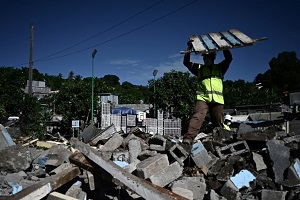
Umm Muhammed Umar
A new study by University of Cape Town researchers says volunteer emergency services are sustainable, and can go a long way in relieving pressure from mainstream emergency services toward saving lives. New data showed that a community run ambulance service in Hout Bay in Cape Town responded much faster than the government run emergency medical service. The five-year study analysed response times between 2015 and 2020. Radio Islam spoke to lead researcher at UCT Dr Charmaine Cunningham.
Dr Cunningham said that the purpose of the study was to try and quantify the contribution of the service to its biggest stakeholder, namely the government service. She said that the underlying reason for the reason was to be able to show government that the volunteer service was indeed making a real difference: “We see that we are serving the community, but can we really put that into numbers and take that to the Western Cape government and say, “this is how we are contributing, and this is how we are assisting.”
One of the main findings on how the volunteer emergency medical services managed to save lives was that it was quick and responded rapidly. Dr Cunningham said, “I think that is the most important finding. In an emergency, we are looking at a key performance indicator of 15 minutes, but if your loved one has stopped breathing, 15 minutes is also quite a long time to get to a patient.” She added, “So, for us the fact that we are within the confines of Hout Bay, and able to respond in less than 15 minutes is really important.”
The EMS is the oldest Volunteer Ambulance Service in Cape Town. There are other models that have started across the country, which are also doing well but, in many ways, this particular mission is a flagship for many communities. The service had begun in 1994, initially, by NSRI members. They were concerned about the time that it would take ambulances to respond to emergencies in Hout Bay. Dr Cunningham said, “One of the NSRI members went on a business trip to the USA and visited student volunteer services at universities in New York, and basically came back with a business model and took it to government and asked for training.” She said, “in the beginning, NSRI members (ran the service) and then in time, they ran more trainings and they got more community members involved. So, for the first few years, we were responding with a state ambulance. “A company called Nucleus has now and sponsored the volunteer services vehicles.
Dr Cunningham said that with shifts sometimes being up to 12 hours, and also the safety factor, it took a special type of person to volunteer. She said that most volunteers could be divided into two groups: young people who are typically students, or have just finished studying, such as young professionals, and slightly older people who are a little bit more established in a career, in their thirties and above.
The service has been running for 30 years now, which is reason enough to celebrate, in light of the fact that all who are involved are volunteers.







0 Comments